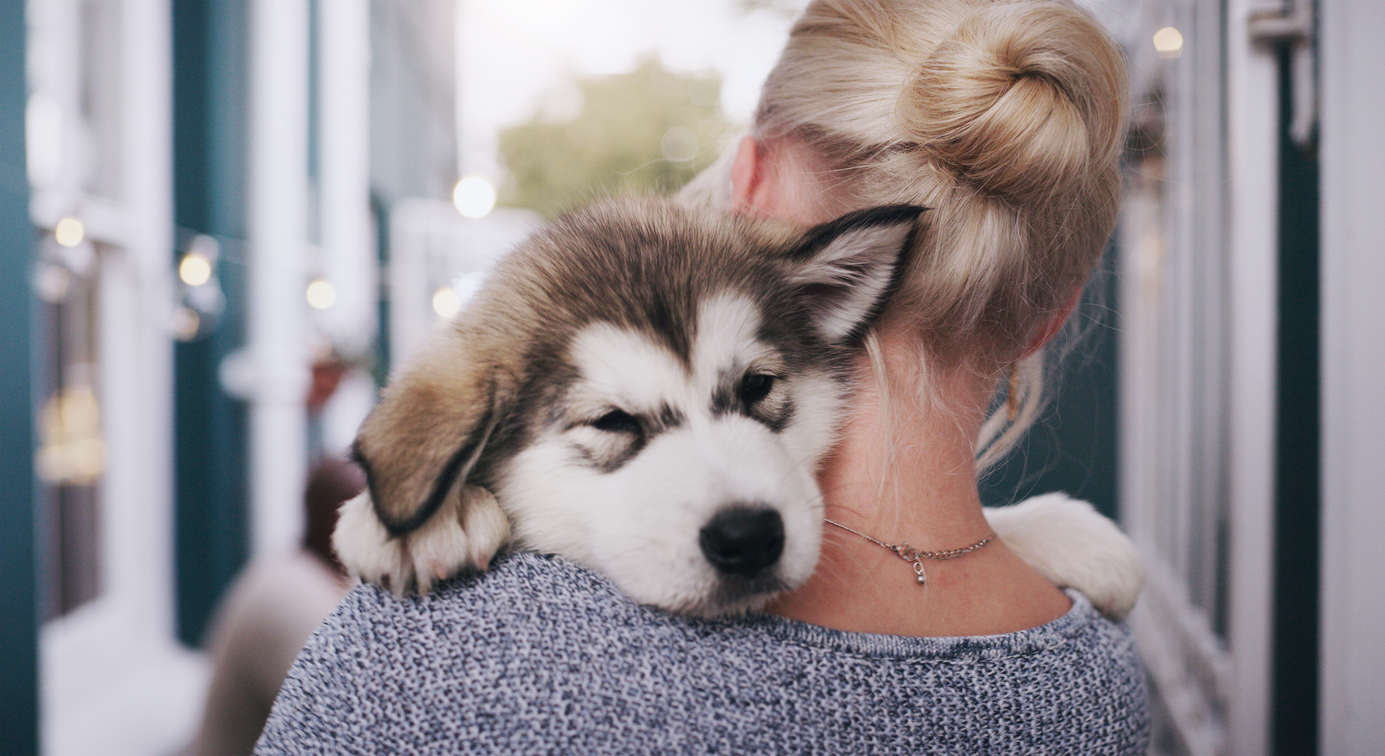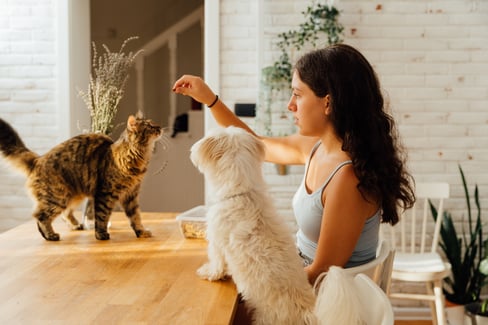Table of Contents
There are few things more exciting than bringing home a new puppy. These wriggly balls of joy bring a lot of fun and activity to a household.
But, they’re also a big responsibility. They are baby animals. So, to look after one takes a lot of special preparation and care, just like with any other type of baby.
Don’t worry, though. We’re not here to dim your excitement for your new fluffy family member. Instead, we want to help you prepare and understand what to expect in how to take care of a puppy, both in general and with some specific breeds.
Golden Rules on How to Take Care of a Puppy
No matter what breed or temperament your pup is, there are certain things you’ll need to do to prepare for your puppy and when you bring them home. That’s why we have seven new puppy tips outlined below to help get you started on your pup ownership research.
1. Pick a Puppy for Your Lifestyle
As mentioned above, there are different dog breeds with all different temperaments. It’s important you take your own lifestyle and what sort of dog would fit into it into account. Don’t make the mistake of picking your puppy based purely on which one you find the cutest.
Instead, think about things like
- How active you are
- The size of your home
- If you have a yard and how large it is
- How much time you spend at home
- The other priorities in your life
For instance, if you live in an apartment with no yard and spend long hours at the office, you probably should avoid high-active breeds like German shepherds or Siberian huskies. But, a low-energy smaller dog like a dachshund, basset hound, or Cavalier King Charles Spaniel might be a good fit (as long as you still have space where they can use the bathroom).
Obviously, when you first get your puppy, any breed will be high-maintenance and require a lot of attention and energy. But they won’t be a puppy forever, and you need to think about the long-term compatibility so that both of you can live happy, healthy lives.
2. Understand Your Puppy’s Needs Before You Bring Them Home
Once you’ve picked out a puppy that suits your lifestyle (whether from a rescue shelter of some sort, or a dog breeder – we always support adoption but there can be health and behavioral benefits for buying from a breeder, especially if this is your first dog), you should do some research on what they’ll need before you bring them home.
Maybe that will just include reading through blog posts like this one to get you ready, talking to the dog owners in your life, or maybe you’ll take that extra step to read books on dog training, for your dog’s particular breed and in general.
However you choose to do it, just make sure you understand what to expect when you take your puppy home and what they’ll need from you, not just for the first few days but long term. You want to be prepared, confident, and knowledgeable. Undoubtedly your puppy will still do some things to surprise you, but knowledge is power, so have some before you need it.
3. Prepare Your Home Before You Bring the Pup Home
Our third golden rule on how to take care of a puppy is to prepare your home before you bring your puppy into it. This includes both puppy-proofing it and getting all the things your puppy needs.
What do we mean by this?
Well, for puppy-proofing, you just need to make sure you don’t have anything lying around your home that your puppy could get into and hurt themself on. This can include things like making sure you have closed or hidden garbage bins, foods, chemicals, or materials that could harm your dog (like grapes, chocolate, and household cleaners) are out of reach or tucked away in cupboards and drawers, and maybe hiding away personal items like slippers and blankets you don’t want to be chewed.
Puppy prep you’ll want to think about before you bring your little furball home includes:
- The proper food and supplements for your pup
- Training treats for your pup
- A dog bed for your puppy
- Dog leash
- Collar and dog tags (you may need to get this after you already have the puppy for sizing purposes, but don’t forget!)
- Puppy toys
- A brush
- An appropriately-sized crate if you’re going to crate train your puppy
- In some cases, a baby gate can be really helpful to block certain areas of your home
Psst, joint supplements for animals are our specialty. Preventing common conditions like hip dysplasia (which can start developing in dogs as little as four months old, depending on the breed) can be as simple as incorporating a joint supplement into your puppy’s diet. TRI-ACTA for Pets is a great option for proactively taking care of your pups joints. It is especially easy to administer, as it comes in a tasteless powder with 100% active ingredients that you simply mix in with your puppy’s regular wet food or kibble.
TRI-ACTA for Pets
A proactive approach for developing and younger adult pets to maintain optimal joint health mobility, minimize inflammation and fend off age-related ailments.
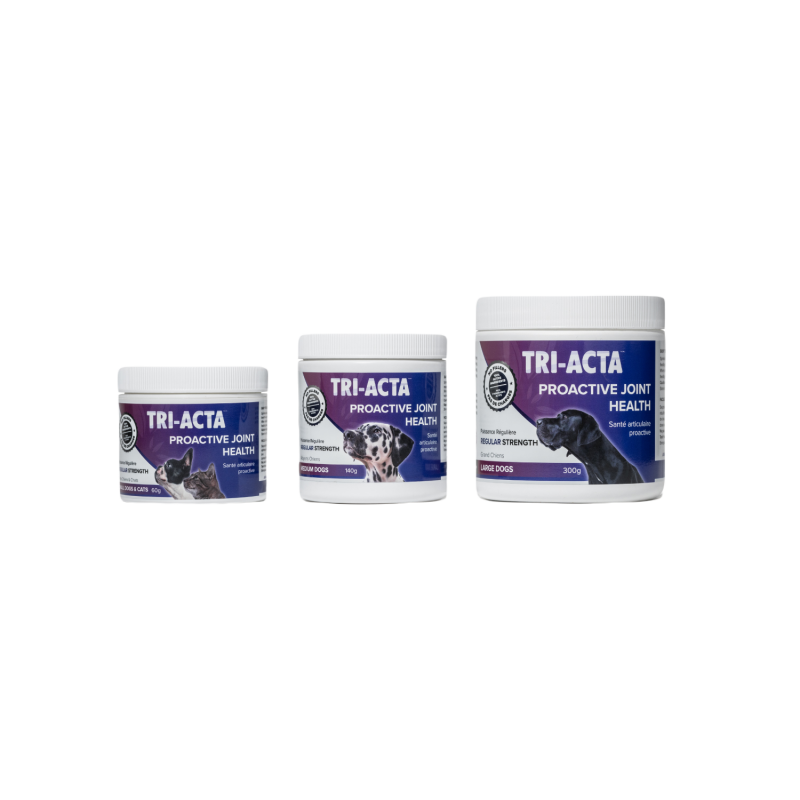
4. Give Your Puppy Space
You’ve gotten to the point where you’ve actually brought your puppy home, and you’ll probably be tempted to smother your precious little baby with love because they’re so cute and scared.
Don’t. Fight that urge. Your puppy will likely be scared, and you don’t want to overwhelm them. Instead, keep a close eye on them so you can ensure their safety, but allow them to explore your home at their own pace. If you have any pets, you’ll want to have them separate, at least at first. Let your puppy get acquainted with their new home first.
It’s also recommended by American Kennel Club that when you do introduce your puppy to any doggy siblings they now have, you do it in neutral territory. This will make your dogs less likely to react territorially (and therefore negatively) to the new puppy.
Although this might be more challenging, you’ll also want to prevent children (if you have any) from overcrowding the puppy, too. They don’t have to be hidden away like your pets, but instead, try and make sure they remain calm while the puppy explores and allows the pup to come to them or approach the pup very gently, backing off if necessary.
5. Take Your Puppy to the Vet
Before you bring the puppy home, you should really make sure you have a great vet. Once you’ve brought that puppy home, depending on how old they are, they’ll probably need to go to the vet at some point in the first couple of months.
Your vet will be able to perform a physical examination to make sure your puppy’s in good health, as well as give your puppy the proper shots. Your vet will also be able to answer any questions and provide you with any advice about your pup’s health if you have any, so don’t hesitate to ask anything you want to know.
At some point within the first year (your vet can recommend a good date), you’ll also want to schedule an appointment to get your pup fixed. (Learn more about that in our blog post All About Dog Neuter Recovery [Surgery Types, Complications & Tips]).
Try to develop a good relationship with your vet because their expertise and skills will be something you can rely on.
6. Begin Training but Be Patient
You want your puppy to be well-behaved, so you should begin training them fairly quickly. When you’re doing your puppy research in step two, include research on methods for training your puppy, too. Make sure you have a realistic timeline in mind for your puppy.
However, don’t be too hard on them, they are just a baby, and they won’t necessarily learn linearly. They may make mistakes when they get too excited or overwhelmed. So, be patient, be calm, and be gentle but firm with your little pup.
Don’t overwork your puppy, either. Their life shouldn’t be all work and no play. So, let your puppy play and explore, too. And, you can make training fun for them, too, with treat incentives.
Some training your puppy will need includes:
- Bathroom training
- Crate training
- Walking on a leash
- Sit
- Stay
- Come
- How to properly greet people and other animals
Some additional fun puppy tricks to consider include:
- Speak
- Shake a paw
- Roll over
- Play dead
- Up
If you’re trying to train your pup but finding it challenging to make them behave, you can also take your pup to a puppy training class.
7. Socialize Your Puppy
A puppy isn’t born with good social manners. They need to learn them, just like little kids on the playground. So, you need to make sure you’re properly socializing your puppy. This includes other dogs, people, and other animals if you’re likely to have more than just dogs in your home. You want your puppy to learn how to be confident, social, and friendly with all sorts of beings.
Dogs that weren’t socialized properly as puppies can become nervous and aggressive with people, other dogs, and/or other animals. You want to make sure you’re avoiding this.
Some ways you can socialize your puppy are:
- Taking them to a dog park
- Taking them to doggy daycare, especially while you work
- Inviting people over to meet your puppy
- Allowing people and dogs to come up to your puppy on walks (only do this if it’s safe for you, your puppy, and those approaching you)
You definitely don’t want to overwhelm your puppy but note different puppies will have different dispositions and tolerances for others. However, a well-socialized puppy should become a happy, social addition to your household.
How to Take Care of a Sick Puppy
If you suspect your puppy has any sort of medical issue, the first step should always be to take them to the vet. From there, your vet should be able to diagnose the problem and come up with a treatment plan. But, there are some general treatment rules for different conditions we can provide some insight on, as laid out in the table below.
|
Sickness |
How to Take Care of a Puppy with It |
|
How to take care of a puppy with hypoglycemia |
This condition is a fancy way to say that your puppy has low blood sugar. Symptoms can be difficult to spot but can include things like weakness, tremors and twitching, poor balance, or even seizures. If you notice these symptoms or suspect your pup has hypoglycemia, take them to the vet. Your vet should be able to diagnose the issue, and from there, according to PetMD, it’s a matter of providing your puppy with sugar to raise their blood sugar levels, treating any underlying condition, and controlling against any recurrences with things like diet. |
|
How to take care of a runt puppy |
The runt of a litter is typically just a puppy that’s smaller than it should be. This could be due to an underlying condition, or it could have no effect on your pup as it grows. To look after a runt, you’ll need to keep an eye on them to see if they have any medical conditions that will need treatment. They might be more prone to illness than other puppies would be, too. They may need help with tasks like feeding. And, if you are raising the puppy from birth, you’ll need to watch the mother see whether she accepts or rejects the puppy. If she rejects the runt, you may need to take a more inclusive role in the puppy’s life for them to survive. |
|
How to take care of a puppy with worms |
There aren’t always symptoms when your puppy has worms, but they aren’t uncommon. The exact treatment will depend on the type of worms, but oftentimes vets will recommend puppies go through rounds of de-worming, beginning at 2-3 weeks old. Typically, this treatment is taken orally, and in two rounds. If your pup did have worms, you might be able to see them in your puppy’s poop. Make sure not to make any contact with the worms. Wash your hands thoroughly after dealing with your puppy’s poop, or if you’ve been touching near their anus for any reason. People can also get some worms, and this is something you’ll want to avoid. More serious types of worms, like heartworms, may involve more serious rounds of medication and treatment. You can also get your pup tested and treated for worms regularly, as recommended by your vet. |
|
How to take care of a puppy with kennel cough |
If you find your puppy has been coughing a lot, they may have kennel cough. Kennel cough can go away on its own, but it’s still worth taking a trip to the vet. They may prescribe medications. However, it is a contagious condition so if you have more than one dog, you may want to try and keep the sick one isolated. |
How To Take Care of a Husky Puppy
Huskies are not the breed for the faint of heart. They’re a very active and energetic breed that takes a lot of maintenance from the jump. With a husky puppy, you’ll need to spend a lot of time playing and exercising with them. Otherwise, an active puppy left to its own devices might get bored and cause some havoc.
You’ll also need to look after your husky puppy’s beautiful fur coat. Husky’s typically have long hair, and they’ll need to be brushed and groomed. The puppy stage is a good one to get them used to this, as it will be more challenging to get them to do what you need them to against their will as they get older and bigger.
How To Take Care of a Pitbull Puppy
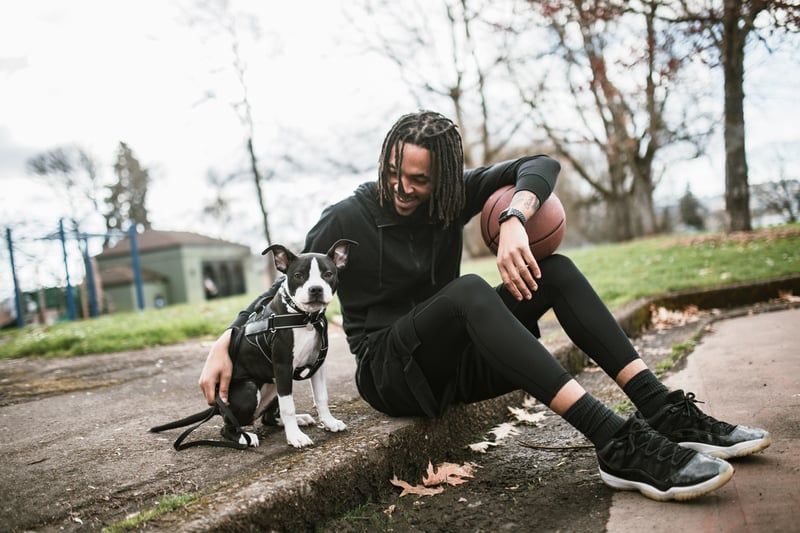
Pitbulls might have a bad reputation, but there’s no reason why you can’t raise one to be a happy member of the family. In fact, Pitbulls are actually known to have friendly dispositions, although not necessarily to unknown dogs.
However, it is important to understand the negative reputation of a pitbull before you purchase one, as you may have to deal with a certain degree of judgment from others. Some people are also scared of Pitbulls, even if they aren’t typically scared of dogs.
That said, these are smart dogs and need to start being trained young. According to dogtime.com, they can be a stubborn breed. They’re also typically strong, which means that stubbornness can lead to them being harder to control as they grow if they aren’t well-trained as pups.
On the plus side, Pitbulls have short hair and are fairly easy to groom compared to the tedious brushing of breeds like huskies.
How To Take Care of a German Shepherd Puppy
Much like Huskies, German Shepherds are a high-energy, large breed. They’re also loyal and intelligent. There’s a reason they’re often picked for work, like being police dogs. So, to raise a German Shepherd puppy, you need to be able to provide them with lots of attention. And you’ll want a good training schedule for them.
Additionally, their large breed status makes them prime targets for hip and joint problems. Both German Shepherd hip dysplasia and arthritis can affect these gentle giants, much like it can for other big breeds, and taking preventative measures can make a world of difference as these puppies grow. A simple addition to your preventative care routine is feeding a joint supplement that includes glucosamine and chondroitin, as well as MSM such as TRI-ACTA for pets.
Socialization in a German Shepherd puppy can be important because shepherds can be prone to anxiety, and it can help prevent that development. They can be affected by separation anxiety in particular, so this is something you’ll want to be aware of and careful of. It might mean you’ll need to strike a careful balance between not leaving your puppy alone too much but also not getting them so used to your presence that they panic when you leave. You’ll have to train your puppy to be okay when you aren’t around.
How To Take Care of a Yorkie Puppy
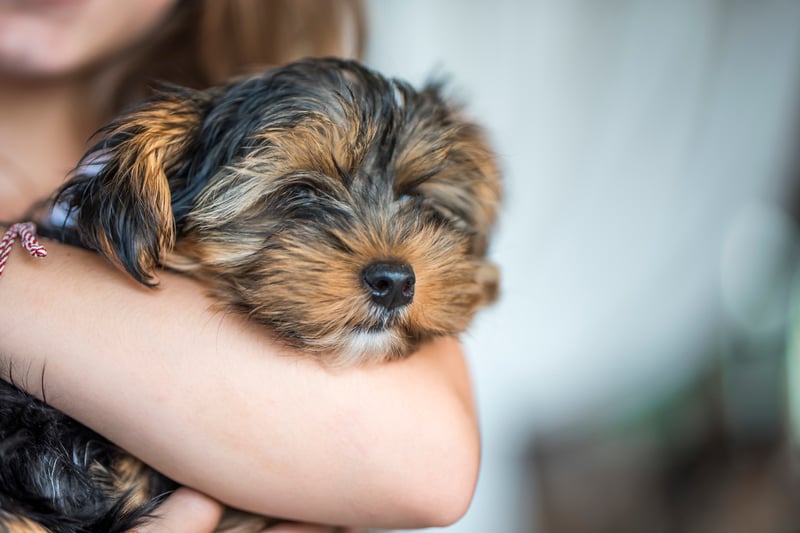
The first toy dog on our list, Yorkshire terriers are an adorable, fluffy, small breed. When raising a Yorkshire terrier puppy, you’ll need to be careful. Their small, delicate bodies make them much easier to hurt or injure, even accidentally.
A Yorkie makes a wonderful addition to any home. Just ensure you’re socializing and training it properly, so you don’t have any issues later on.
This beautiful breed has beautiful long hair, although it can be kept shorter. If you keep your Yorkie's hair long, you’ll need to maintain it with proper brushing and grooming. You also might want to tie it back, so it stays out of your pup’s eyes.
How To Take Care of a French Bulldog Puppy
This breed has become quite trendy with its distinctive face and cute little body. However, French bulldogs are more than a fashion accessory or cute Instagram picture, so you’ll need to be aware of how to properly look after one before getting one.
For instance, bulldogs can’t swim. If you do wish to take your puppy swimming, they’ll need to have some sort of floatation device to help them. And they should not, under any circumstance, be left around water alone.
Due to the shape of their skull and nose, French bulldogs can also have breathing issues.
That being said, there’s a lot to love about these dogs, too. For instance, they’re a playful, friendly breed. According to the American Kennel Club, they also have a high trainability and adaptability level.
How To Take Care of a Chihuahua Puppy
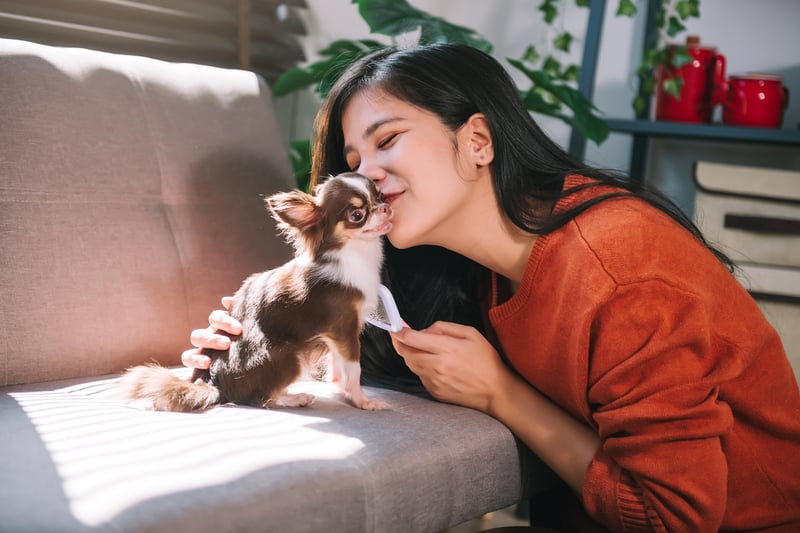
The smallest breed in the world, chihuahuas are delicate. You need to be careful with them so you don’t hurt them, even more so than with Yorkies. This can pose a problem in homes with very small children. You’ll also need to watch them while outside, as their small size can make them targets for other predators.
These dogs have quite the reputation for being yippy, annoying, or a ‘rat dog.’ However, this adorable breed can make a great pet. Britannica establishes chihuahuas as energetic, playful, affectionate with their family (although potentially wary around others), and feisty. They can have a lot of personality in their little bodies.
Because chihuahuas are so small, they don’t need a lot of space to be able to get adequate exercise. Therefore, these pups can be good for those who don’t have a large yard.
Key Takeaways
Bringing home a puppy should be an exciting time – you’re getting a new member of the family. However, it’s important to remember the responsibility that comes with puppy ownership. Don’t forget our seven golden rules on how to take care of a puppy.
- Pick a puppy for your lifestyle
- Understand their needs before you bring them home
- Prepare your space before you bring them home
- Give your puppy space
- Take them to the vet
- Be patient in training
- Socialize your pup
Don’t forget to research the specific needs of your chosen dog breed, as each will have its own distinct behaviors and tendencies. While it may be commonly known that large dog breeds are especially prone to joint issues and other conditions such as hip dysplasia and osteochondritis, it’s important to remember our small breed friends can develop joint issues like a luxating patella, too. No matter how big or small your pup is, one of the main ways you can prevent your dog from developing joint issues is by incorporating glucosamine joint supplements into their diet. If you want to protect the joints of your puppy proactively, TRI-ACTA for pets checks all the boxes.
TRI-ACTA for Pets
A proactive approach for developing and younger adult pets to maintain optimal joint health mobility, minimize inflammation and fend off age-related ailments.

To learn more about the health of your new puppy as they grow, check out our blog and our resources page.
And if you’ve still got questions, don’t be afraid to contact us.
Newsletter Signup
Subscribe to our newsletter to receive the latest news and exclusive offers.
.jpg?height=2000&name=Cliick_Integricare-DISPLAY-REVISEDV2%20(1).jpg)
Proactive & Therapeutic Joint Supplements
When given daily, Integricare joint supplements recover bone and joint injuries faster and help prevent mobility injuries from happening in the first place.

